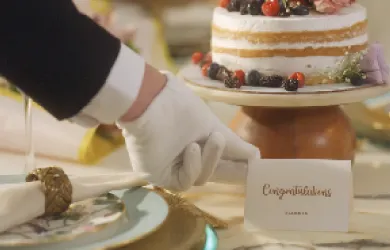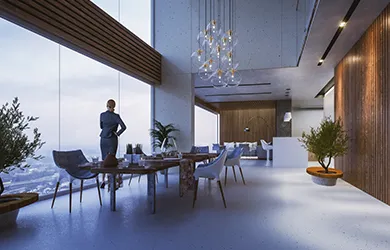- Our Story
- Our Impact
-
Our Projects
Residential
Commercial
- Careers
The Kings of Transformation - George Yabu and Glenn Pushelberg
By BetterLife
March 20, 2020For BetterLife - By Neeti Mehra
George Yabu and Glenn Pushelberg, the duo behind the award-winning practice Yabu Pushelberg, use the power of design to create visually and emotionally appealing spaces.
"We live in the moment, while continuously thinking about how we can live in the future," says Glenn Pushelberg, one-half of Canadian design powerhouse Yabu Pushelberg. Nimbleness and agility has helped organically expand their design narrative from a Toronto-based interior design studio, to a global, award-winning multidisciplinary practice, which straddles 15 countries, 80 products in various stages of design and development for 20 companies, and a staff of 125 spread between offices in Toronto and New York City.
Yabu Pushelberg's hedonistic aesthetic has made them the darlings of the biggest luxury brand names in the world. They've left their indelible stamp with sumptuous interiors in cocooned environments, designing spaces where people feel comfortably "at home". Their client list is enviable, stretching from luxe hotel brands such as The Four Seasons, Hyatt and Marriott to the largest names in retail, including Printemps, Lane Crawford, Barneys New York, Bergdorf Goodman, Louis Vuitton, Carolina Herrera, Kate Spade and Tiffany & Co. "We have cultivated and mastered the Yabu Pushelberg DNA," explains George Yabu, articulating their futuristic, detail-driven vision, "creating deeply thoughtful, distinctive projects that are appropriate to where we believe the client should be, rather than where they are in the present." Their beginnings were rather serendipitous.
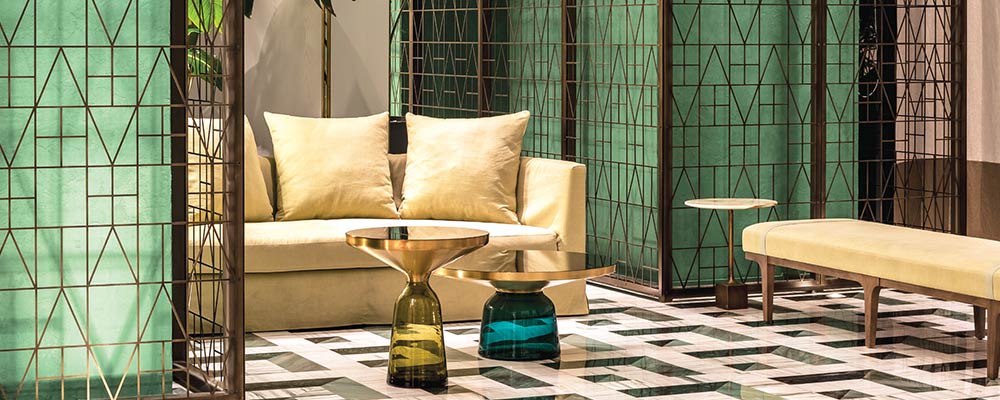 At SLS Lux, Yabu Pushelberg embrace the cultural heritage of Miami.
At SLS Lux, Yabu Pushelberg embrace the cultural heritage of Miami.
It was serendipity that brought Yabu and Pushelberg together for the second time. In the 1970s they had studied interior design together at Toronto's Ryerson University and then lost touch. A few years after graduating, they bumped into each other on the street and decided to share a studio space together while pursuing freelance projects. For around a year they helped each other with their individual projects before combining their creative energies as a team, starting small with local gigs, the odd coffee shop and dry-cleaning depots. Eventually, they became work and life partners, an association that has continued for four decades.
"The word 'timeless' often comes up in conversation when we discuss our evolution in design, but we're more focused on 'timeliness'." George Yabu
Yabu is the creative force with an eye for details, articulating the purpose of a project. Pushelberg is the interface between the client and the creative team, reading between the lines to help them understand what a client truly desires. The project that catapulted them into the big league was Canadian high-end casual clothing retailer, Club Monaco (now owned by Ralph Lauren), to design the hip label's first ever store, in Toronto. The two created simple concept store environments that pushed the envelope: Playful, theatrical spaces where clothes were artfully arranged. A smashing success, they ended up bagging assignments across the globe, with several in Asia, too.
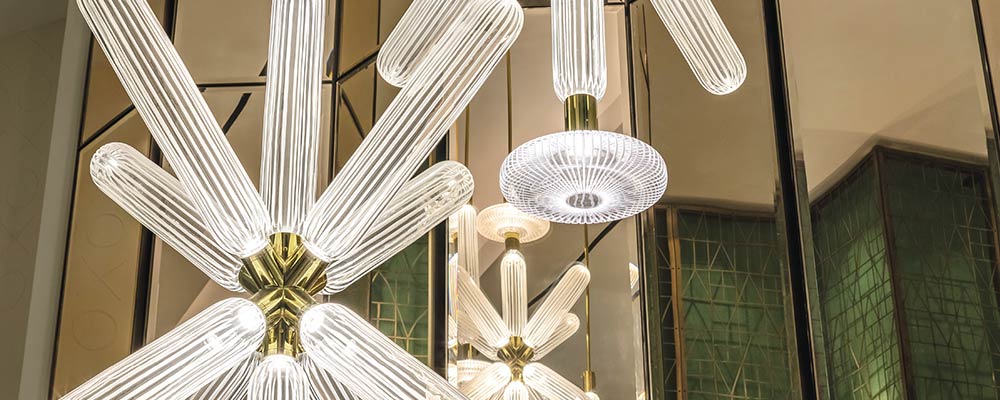 A 15-foot starburst chandelier by Czech crystal manufacturer Lasvit is
inspired by Yabu Pushelberg's Cipher collection.
A 15-foot starburst chandelier by Czech crystal manufacturer Lasvit is
inspired by Yabu Pushelberg's Cipher collection.
The next decade saw Yabu Pushelberg explore the possibilities of design and aesthetics. When recession hit, they hurtled towards bankruptcy, but were rescued by winning a contract to design a Taiwanese department store. Soon after, they landed a career defining project: New York's iconic department store Bergdorf Goodman, their first fashion luxe project. At Bergdorf Goodman they defied convention, designing the cosmetics department in the basement, rather than at the store entrance, much to the chagrin of the vendors. Despite naysayers, it proved to be a great success, and they decided they needed to expand their artistry beyond Toronto, opening up an office in the Big Apple.
For them, the very notion of luxury has evolved into a concept that is simple, pared down, yet sophisticated, something that defines the Yabu Pushelberg edit of quiet, enduring luxury. "The word luxury is bogus, because it is so overused and no longer holds the same meaning as it once did. It has become a cop-out, a way to identify something without explaining why it's great or how it can relate to people's wants and needs," says Pushelberg.
 At Park Hyatt Shenzhen, a palette of materials create a sensory
experience.
At Park Hyatt Shenzhen, a palette of materials create a sensory
experience.
People don't wake up in the morning thinking, 'I want to find luxury, I want to feel luxurious.' Rather than this flouncy term, they are searching for something simple. "Inherently, people just want to feel good and it's our job to do that. They want to feel as though they are in a space that is considered and holds its own, through quality or attitude," says Pushelberg. As designers, the duo needs to be able to read the room and set the right tone, making thoughtful decisions and laying out the space perfectly. "We are always looking to break the glass ceiling surrounding what 'luxury' means and how it is defined."
Their 'less is more' aesthetic is rooted in multiple layers of the human experience. They design buildings, interiors, landscapes, lighting, furniture, objects and graphics, an approach that outlines how the latter make people feel, rather than merely how they look. "We wanted to annihilate the 'what if,'" explains Yabu, "because, over the years, we were in some way or other constantly inserting ourselves into every step of the overall process."
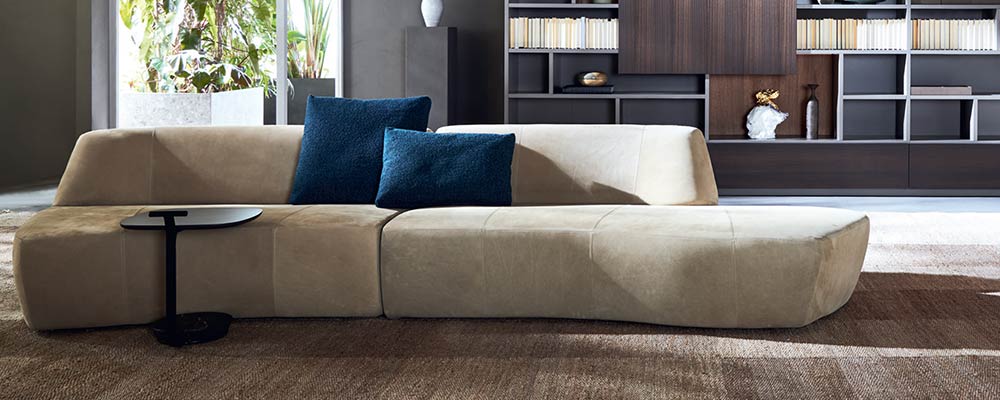 The studio also custom-designs furniture, lights and decor accents.
The studio also custom-designs furniture, lights and decor accents.
An overriding curiosity drove them to question every nuance that confronted them. How would lighting affect the colour of the wall? Or, would a sofa blend with a room's attitude? This inquiry nudged them into a world of fantasy -- an imaginary world of furniture and fixtures that didn't exist. Their solution was to hire young, imaginative specialists who pushed unconventional, obscure ideas forward and now their inventive team comprises over a ten creative professionals.
"Inspiration can grow from anything we see or do. A shadow, a reflection. Sometimes, when you look at your surroundings and misinterpret what you see, it can give you the most incredible ideas." George Yabu
"We have specialists working together to think about every single aspect of a Yabu Pushelberg project: from the vibe of a room to the couch you sit on, from the wine glass you sip from, to the Instagram account that lured you there in the first place. No detail is too small. We love details because that's where the magic happens," in Pushelberg's words. The breadth of their vision helps them touch every single element of the design experience. "We are now in a place where our creativity can flourish. We can bring our complete vision to life," says Pushelberg, speaking about conjuring up immersive environments and compelling destinations.
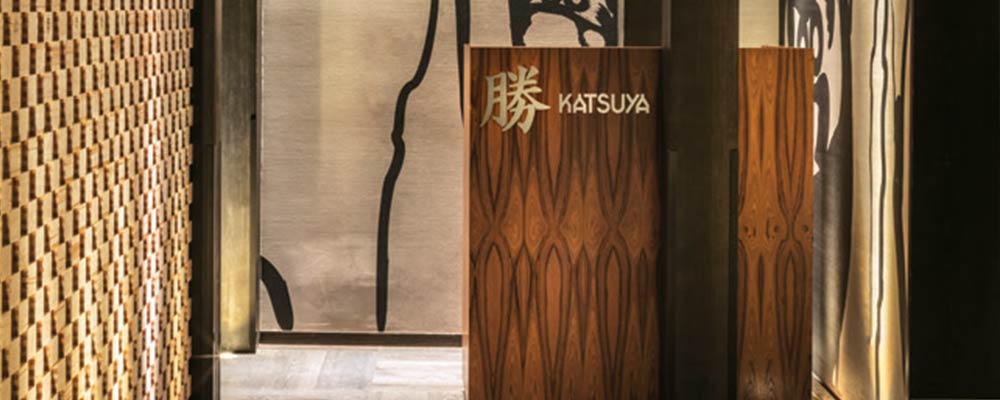 The dark, earthy interiors of the restaurant Katsuya
The dark, earthy interiors of the restaurant Katsuya
Over the years, Yabu Pushelberg have earned many accolades. They have been inducted into the Interior Design Hall of Fame, a much-coveted property run by the magazine Interior Design, and have been named among the world's most influential design studios by Wallpaper*, Elle Décor and the Business of Fashion. To them the trophy shelf is not their primary concern. It's the search for what's new and innovative, as they strive to conceive memorable experiences.
Transforming design to be more than luxury
To Yabu and Pushelberg, the scale of a project is irrelevant; with every assignment, their idea is to make a lasting impact by designing an environment that touches a part of you at a personal level rather than a mere medley of luxurious materials. With a hands-on approach, they go the extra mile for each venture. "We see our clients in person, visit the factories and understand each step of the process. We do this with all our projects: we push ourselves to think bigger," says Pushelberg, of their commitment irrespective of the scale involved. "This matters more than designing a building that can reach the clouds; it's about how everyone can immerse themselves in the full experience, within a space we have created," says Pushelberg.
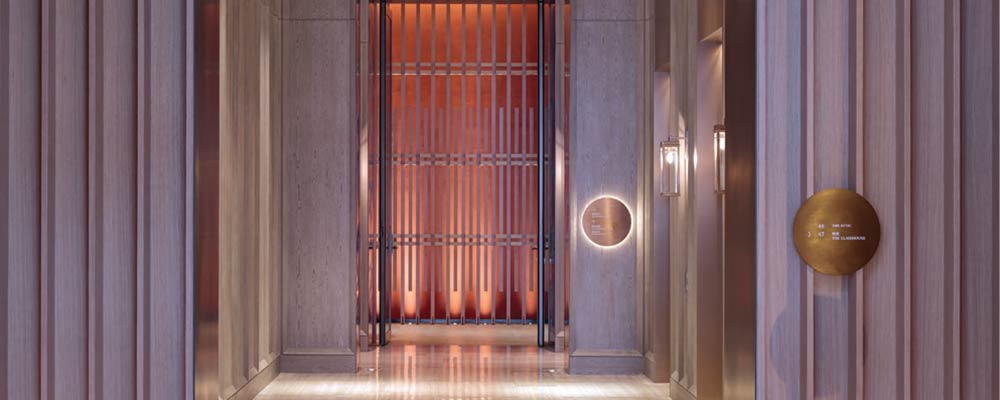
The Asian-inspired décor of Park Hyatt Shenzhen comprises custom-made
furniture and artwork with Chinese influences.
The Yabu Pushelberg aesthetic is a classic that never goes out of style, irrespective of the era it was first thought of in. Says Yabu, "The word 'timeless' often comes up in conversation, but we're more focused on 'timeliness'." Their projects are relevant to the moment and yet resonate through time. "We're wired to think ahead; towards a goal or idea. Our studios are agile, versatile and full of thinkers, like us."
Samuel Leizorek, the owner of Las Alcobas hotels in Mexico and Napa Valley, who has worked with them on five different properties, says: "Their projects age incredibly well. They have a unique way of creating layers and depth that remains relevant." Their work is almost exclusively commercial, although the firm reluctantly accepts some residential commissions.
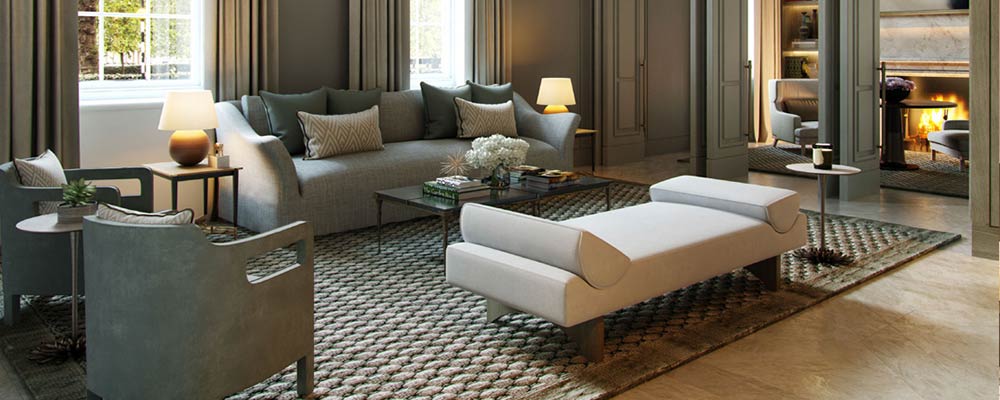 The plush library and lobby at 1 Grosvenor Square, London, a project by Lodha Group.
The plush library and lobby at 1 Grosvenor Square, London, a project by Lodha Group.
One of their all-star collaborations has been with Ian Schrager for Marriott's EDITION Hotels; they reimagined the London EDITION as a cultural microcosm of the city. Set in a building that was originally built in 1835 as five townhouses, they were eventually combined in 1908 to form the first five-star hotel in London, the Berners Hotel. "We wanted to celebrate the property's rich history by preserving its finest aspects, while adding a modern twist," says Pushelberg. They restored the magnificent edifice's Belle Epoque grandeur. Yabu Pushelberg took cues from the local design language, balancing traditional and contemporary sensibilities. They juxtaposed the building's original marble floors and stained-glass windows and walls with contemporary motifs, such as German-based lighting artist Ingo Mauer's polished silver sphere, a mirrored egg installation, used as a chandelier.
Yabu recounts working on The Times Square EDITION, and designing the unexpected, "Of all the things Times Square is known for, nature is not one of them. We used greenery as a mechanism to contrast the hotel from the neighbourhood by creating a botanical boundary between the two environments."
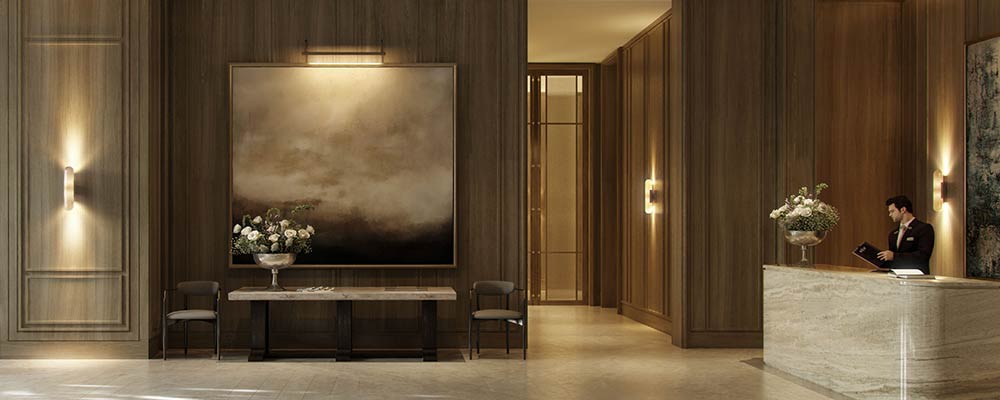 The bespoke design at 1 Grosvenor Square, London, a project by Lodha
Group, features top quality finishes and detail
The bespoke design at 1 Grosvenor Square, London, a project by Lodha
Group, features top quality finishes and detail
Another project they have been working on is Lodha's No.1 Grosvenor Square, injecting London's pulsating energy into a modernistic period piece. Located at the corner from Bond Street and Mount Street, No.1 Grosvenor Square is being reconstructed, brick by brick, for the 21st century. They have travelled to India, for a project with the Four Seasons. "Our impression of India is that of a vibrant and magnetic country," says Pushelberg.
Currently the duo is working on multiple projects across different scales in Tokyo. Says Pushelberg about the city's fantastic energy, "We see how thoughtful, considered and forward-thinking the people are. They are very open-minded and eager to collaborate."
For the last several years, the duo have been travelling between their two offices and hopping across the world. In recognition for putting the country on the global design map, they've been honoured as Officers of the Order of Canada -- the country's highest accolade. Even though a lot of home-grown talent had left the Canadian shores in search of better opportunities, the city is seeing an influx of global talent. "Toronto has grown to become a launchpad for creatives, new businesses and even the tech industry. It is a place that creates a real sense of community," says Pushelberg. The music scene with Drake and The Weeknd, the Google office building, its first ever tech neighbourhood by the waterfront, great universities and eclectic food -- Toronto has everything.
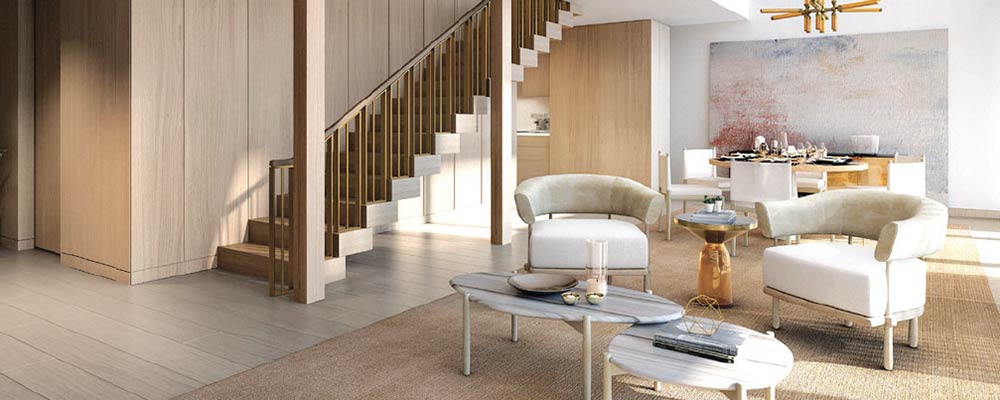 At Fairmont Century Plaza, the designers have interpreted the modernism of the
'60s for contemporary times.
At Fairmont Century Plaza, the designers have interpreted the modernism of the
'60s for contemporary times.
Pushelberg continues, "The key behind this success is the spectacular diversity of the city. So long as a city is inclusive of others, there can be room for growth." While Canada is a smaller market for them, their key work includes a Four Seasons Hotel and the glamorous Hazelton Hotel, in fashionable Yorkville. For the Rio Olympics, Yabu Pushelberg were commissioned to design the Canada Olympic House. Assembling and installing the structure in a record time of two weeks, in the bright red colours of their country, the studio used affordable materials. In an interview with The Architects Paper, Pushelberg said, "Our aim is to show the world that Canadian design is progressive and sophisticated. The design for Canada Olympic House is bold, smart, fresh and unexpected." Naturally, when actress Gwyneth Paltrow wanted to introduce her wellness and lifestyle brand to Toronto, she turned to Yabu Pushelberg to design the Goop MRKT Toronto, a rustic outpost in The Hazelton Hotel, in colours of blush and cream.
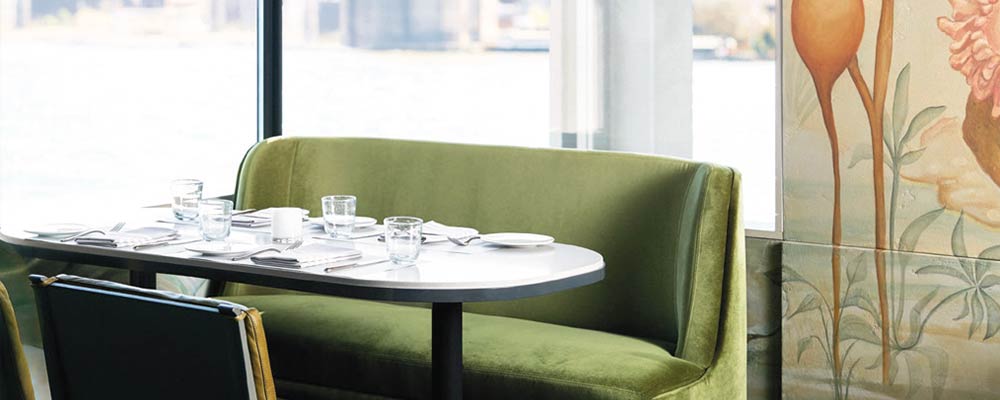 At The Fulton, New York, they evoked the history of the city's
seaport.
At The Fulton, New York, they evoked the history of the city's
seaport.
Creators of distinctive environments for diverse, often high-profile luxury retail, hospitality, residential and restaurant clients, Yabu Pushelberg have not scripted a completely linear evolution. They have moved beyond the narrow confines of a mere luxury interior design studio, to dabble with innovative new projects. They took on Marriott's affordable, millennial-focused The Moxy Hotel's debut in America, a category positioned as a boutique hotel for the modern traveller. "When we started the project, it was positioned as a micro hotel for millennials, a strategy which worked in Europe. The challenge was to reinvent this concept for the North American market -- it was fun to imagine a new type of hotel room for people with a nomadic mindset," they have said.
Their inspiration was early Puritan (English Protestants in the 16th and 17th centuries) design -- the simplicity of this aesthetic and the notion of 'urban camping'. "We looked for ways to put a modern twist to make our design youthful and portable." The interesting part was creating a host of adaptable furnishings to make the most of the compact space, including custom-made chairs and tables designed to fold away and hang from wooden wall pegs. Deanne Ting, known for her incisive profiling of the big names from design and hospitality, believes that as the future of hospitality appears to lie in smaller hotels, Yabu Pushelberg have explored the art of blending the need for more niche, smaller hotels with the design aspirations and expectations that people have from hotels.
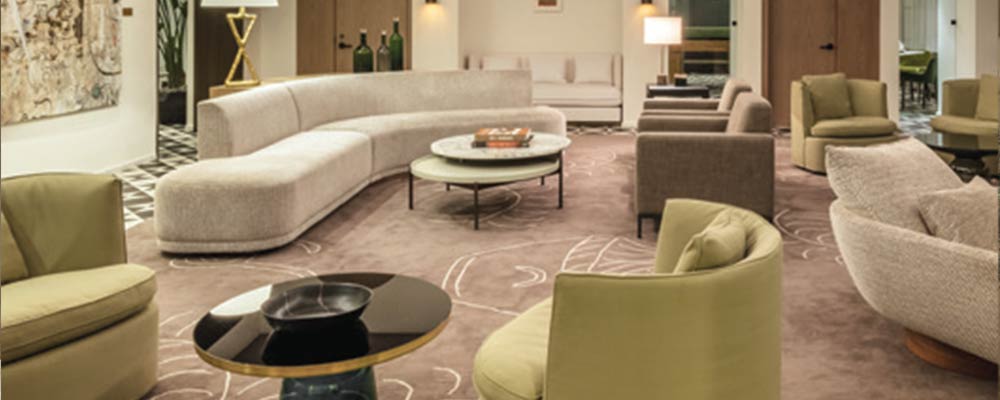 A play of textures and depths of light creates a visual hierarchy at SLS Lux
Brickell.
A play of textures and depths of light creates a visual hierarchy at SLS Lux
Brickell.
Even more so than ever, the world needs timeless design. Says Yabu "With the current climate, it is important for us to stress to our designers the impact of certain materials. Our actions should always be considerate of our future."
Where does this constant flow of inspiration come from? "Inspiration can grow from anything we see or do. A shadow, a reflection. Sometimes, when you look at your surroundings and misinterpret what you see, it can give you the most incredible ideas," says Pushelberg. Their insatiable thirst for knowledge and curiosity about the world around them is textured by their travel experiences. As he says, "Paul Smith wrote a book called You Can Find Inspiration in Everything (And If You Can't, Look Again). Inspiration can come from a person, from looking at a leaf, or a book cover, or smelling a scent -- there are more ideas than places to put them. Whether it's a natural landscape or a Hiroshi Senju painting, we can find beauty in just about everything."
Their scripted creativity has set the bar high for new luxury in a jaded landscape. "We use design as a mechanism to transform the way people can live, can think, can be. That is the true meaning of transformation," concludes Pushelberg. London-based design writer and documenter Ellen Himelfarb has this to say about the designers, "In projects such as the Clement restaurant at New York's Peninsula Hotel and the London EDITION, the team has excelled by delivering what guests want, even if they don't know they want it: luxe finishes, great lighting and show-stopping artistic flourishes. And their pared-back interiors for New York's One Madison development focus on expensive grainy woods. Yabu Pushelberg create the kind of cocooning environments that you just don't want to leave."
3 recent projects with the quintessential Yabu Pushelberg touch
Fairmont Century Plaza, LA
Architect Minoru Yamasaki's elegantly curved 1966 hotel was built on
land sold off by 20th Century Fox, following the financial failure of the movie Cleopatra. The designers worked from
this notion of modernism of the 1960s and made it relevant for today, by adding more textures, drama, and greater
comforts for a tailored, timeless hotel. One of the spaces designed by them, a 3,000sq.ft room that bears some
resemblance to Frank Gehry's Walt Disney Concert Hall, features a dramatically articulated wooden ceiling, uplit
walls and bronze doors.
Departo
Yabu Pushelberg joined hands with Yuichiro Hori, the founder of the furniture label
Stellar Works, for Departo. A play on the Japanese expression for 'department store', as well as the idea of
departing, the direct-to-consumer e-commerce product and furniture brand is built upon distilling the experience of
finding well-made souvenirs and objects in different parts of the world, and bringing them together to form a
dynamic collection that works both, on its own or in unison.
The Fulton, New York
For chef, entrepreneur and restaurateur Jean-Georges Vongerichten's new
venture The Fulton in New York, Yabu Pushelberg evoked the history of the city's seaport. Located at Pier 17, the
new restaurant is adorned in hand-painted murals by artist En Viu, and illustrate a whimsical undersea journey.
Dock-floor patterns, wood panelling and asymmetrical lighting play on the buoyancy of the waterline outside.
You may also like



 Enquire
Enquire
 Call
Call
 chat
chat
 Search
Search

